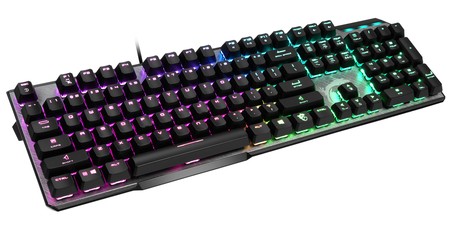
Software
Dragon Center is MSI’s attempt to unify lighting and settings for its many products. This is great if you have multiple MSI components, but if like most you mix and match your brands, you’re still likely going to need a bunch of software packages. That said, I still prefer brands to take this approach.
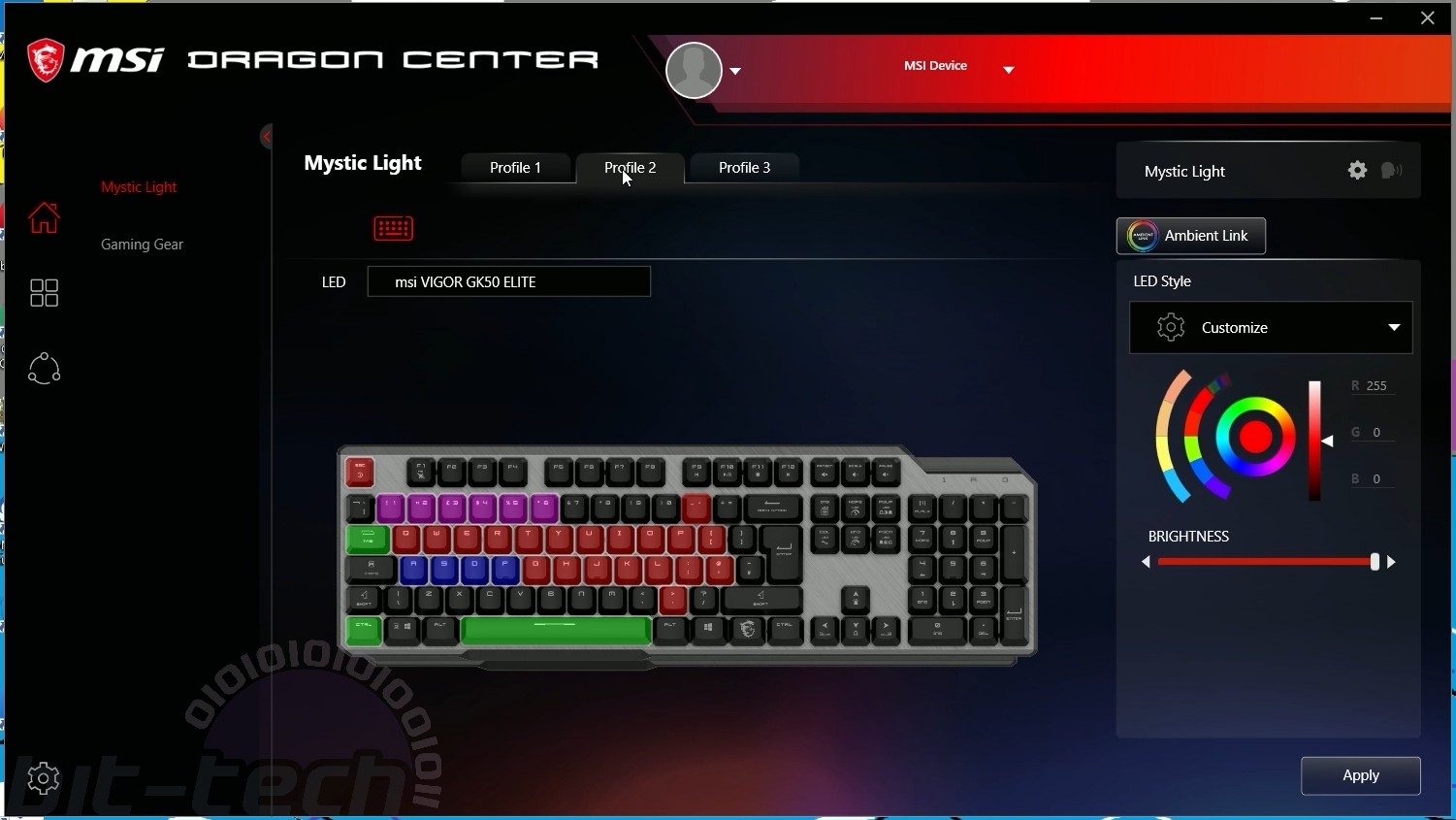
With the keyboard connected, you have access to two menus: Mystic Light and Gaming Gear, which control the RGB lighting and onboard profiles/macros, respectively. The first thing to note is that the three lighting profiles within Mystic Light are software-driven and can encompass and synchronise multiple Mystic Light-enabled products.
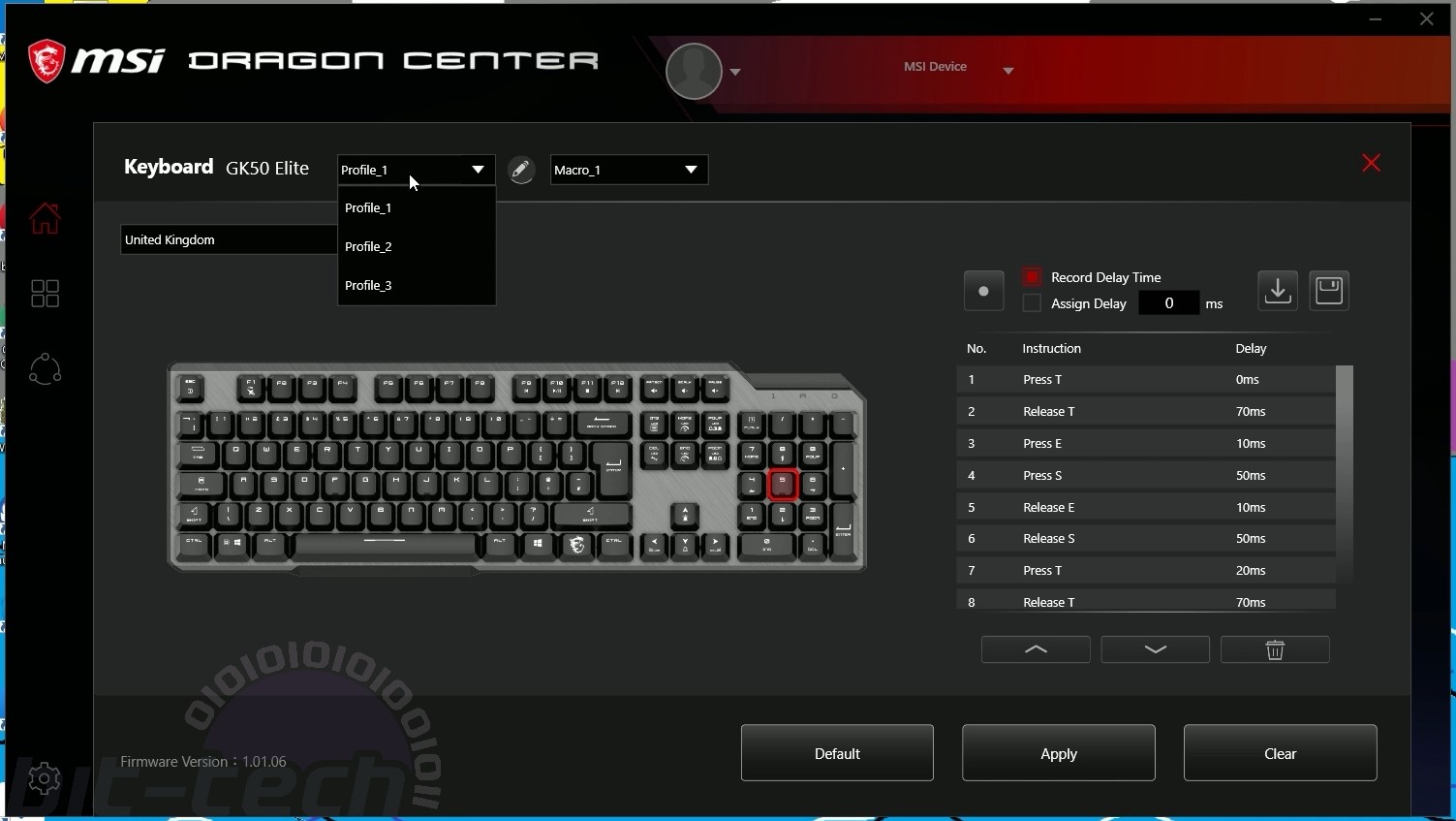
The macro programming interface also has three profiles, but confusingly, these operate independently of the lighting profiles, because they are hardware-driven and stored on the keyboard itself (if you exit the software, the macros active on the most recent profile still function, even on other PCs without the software). However, as already mentioned, you need the software in order to make changes to any macros and even to switch between the onboard profiles. It makes all of zero sense to me, but it is what it is, and it may be why MSI has glossed past macro support entirely in its marketing around the Vigor GK50 Elite.
Update 27/08/20 (copied from page 1): MSI has been in touch and responded to my criticism of the keyboard's inability to switch between its three hardware profiles without using the software. MSI's reasoning is that 'to have too many profiles available to switch with the hardware could be confusing'. That said, MSI has also stated 'we will consider adding hardware switching in future development if that's what the majority of users prefer'. My own opinion on the matter remains unchanged.
Inconsistencies aside, the lighting portion of the Dragon Center interface is intuitive and makes fine-tuning the lighting fairly easy, but the level of effects isn’t as deep as it is in the multi-layered offerings of Corsair, Razer, and others. The macro interface also definitely needs work. Recording macros and setting delays is easy enough, but knowing which macros you have assigned where is nigh on impossible. It doesn’t properly highlight keys that already have a macro running on them, and if I wanted to set up multiple macros across the three profiles it’s not an interface I’d enjoy using.
Performance
The two available switch types for the Vigor GK50 Elite are known as Box White and Blue, and both are manufactured by Kailh (AKA Kaihua), a company whose reputation isn’t as bad among keyboard enthusiasts as it once was. It wasn’t all that long ago that companies shied away from revealing that their switch OEM was Kailh, but MSI isn’t doing that here, which is a promising sign for Kailh if nothing else.
Kailh Blue switches are an imitation of Cherry MX Blues (~60g actuation, ~2mm pre-travel, ~4mm actuation) and thus have a “traditional” clicking action that I’m less a fan of, mostly because I don’t get on with the hysteresis i.e. the noticeable difference between the actuation and reset points, which makes it hard to quickly double-tap a key. You’ll often hear it said that this is good for typists (it prrevvenntss acciddennttall errors) but bad for gamers (harder to do fast, repeated clicks), but personally, I just don’t like the feel, especially on the return, and I find the tactility of Brown switches to be smoother and preferable.
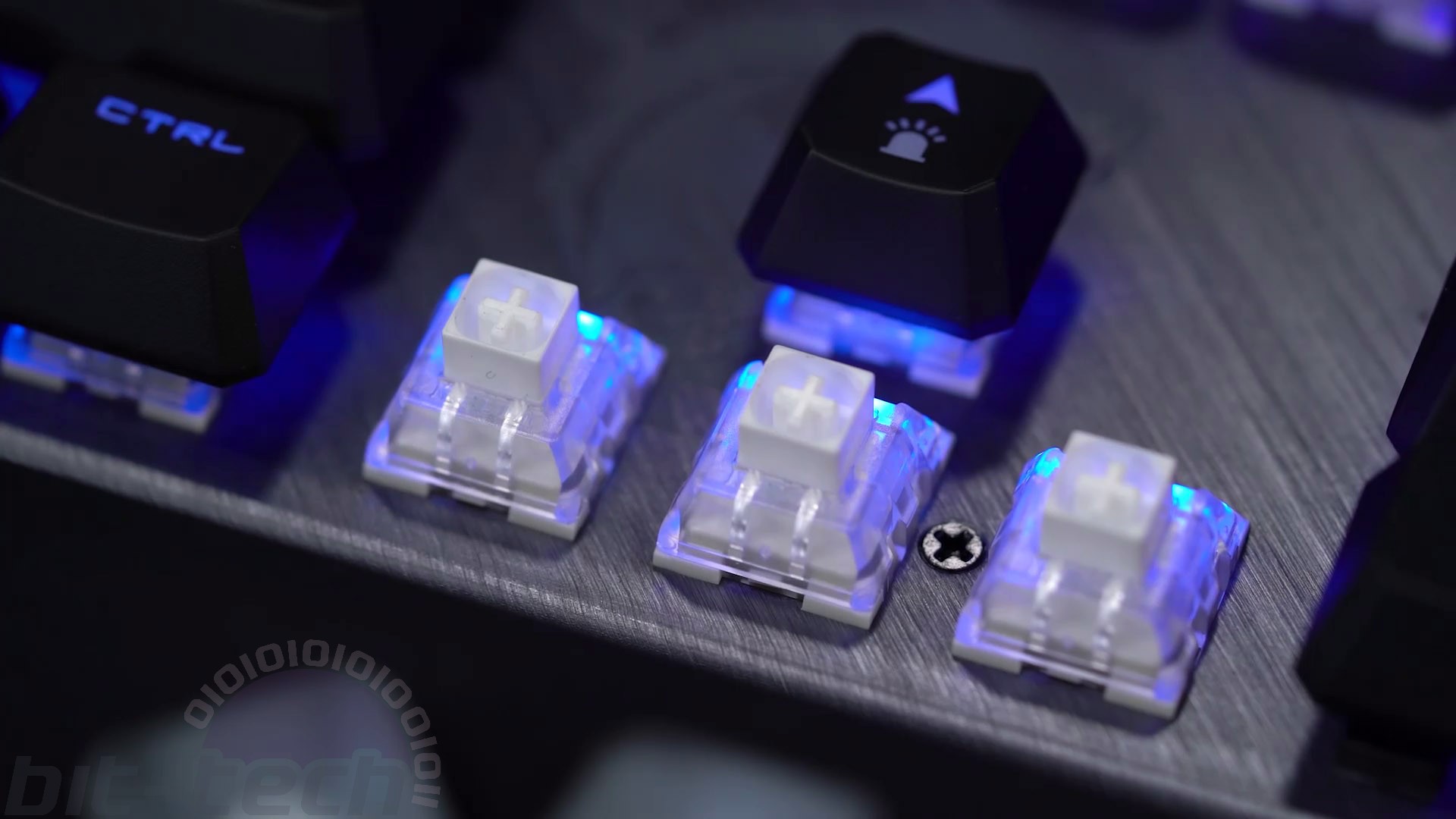
Kailh Box White switches, however, are a newer design with a lighter and shorter actuation: ~50g actuation, ~1.8mm actuation, ~3.6mm travel. They also have an enclosure (hence ‘Box’) that gives each switch an IP56 rating, but the keyboard itself does not have this and should not be considered waterproof or water-resistant. The cross-shaped stem ensures compatibility with aftermarket keycaps designed for the Cherry MX family.
The primary actuation mechanism, contained within its box, is linear and not inherently tied to the click. Instead, a notch on the plunger pushes on a spring-loaded click bar as you press the key, eventually pushing past it and causing it to bounce back with a click. This also happens again on the return, so each press actually results in two clicks whereas on a Blue it’s just the one. The click bar also introduces a small tactile bump to the motion.
This disconnect between click and actuation has an obvious downside, though, which is that a click doesn’t guarantee an actuation. On a Blue, the release of the click jacket downwards is what allows the switch contact to be made i.e. one click = one actuation by design. With a Kailh Box White, however, the return click is obviously not an actuation, but more importantly it means that the single first click does not necessarily equate to an actuation. Kailh will of course attempt to align the click and actuation points as closely as possible, but with manufacturing tolerances in mind, you may be able to click without actuation or actuate without click.

Through controlled presses, I discovered that multiple switches on the Vigor GK50 Elite click before actuation, confirming the disconnect between the two. Thankfully, I did not detect it during normal use where key presses are much less controlled, so the manufacturing tolerance appears to be well set. That said, there’s always a chance you’ll unwittingly use just the right level of force to get a click without the expected actuation, especially if you’re quite light-fingered. It’s still a very small chance if my experience is anything to go by, but it’s a chance nonetheless.
I don’t suffer from hand fatigue when typing (years of training and all that), so I can’t comment on the effectiveness of MSI’s ‘high-low’ keycap heights in reducing it, but I can say that typing on and using the Vigor GK50 Elite is very pleasant. The size and spacing of the oddly-shaped keycaps feels very natural, and they attach to the Box White switches securely, exhibiting minimal wobble or rattle.
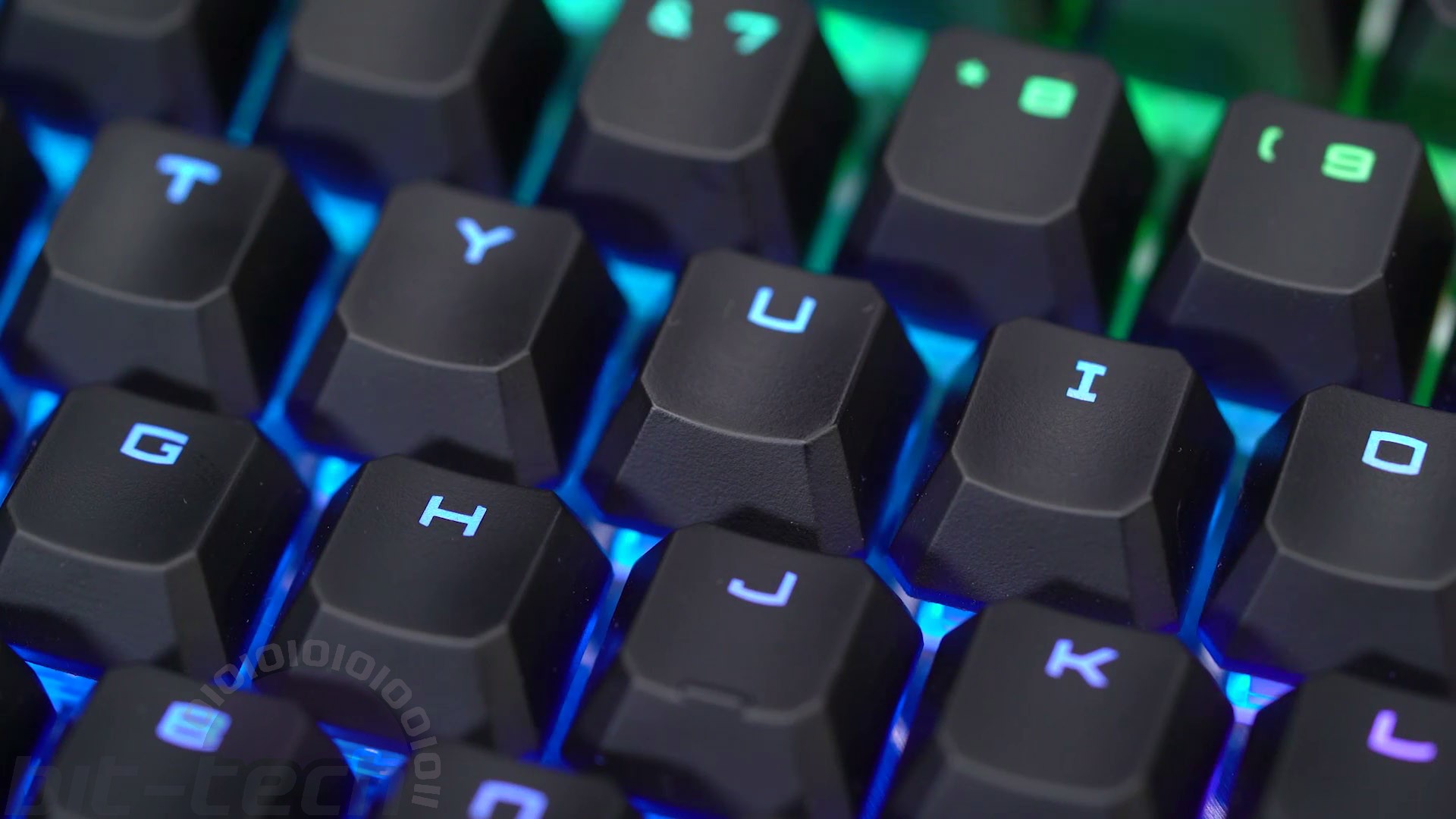
As I said at the start, I was pleasantly surprised by the action on these clicky switches. The initial travel is smooth, and the tactile bump is on the subtle side but nonetheless crisp and sharp. The bump is also very short and snappy in both directions, and it’s the snappy return that I think really elevates it above a normal Cherry MX Blue where I find the hysteresis to be too interfering. The smooth action, no doubt a result of the linear actuator, coupled with a crisp click from the bar is very satisfying. The consistency of the action across the keys is also very good.
As a clicky keyboard, the MSI Vigor GK50 Elite is certainly on the loud side. While it’s maybe more likely to induce irritation over Zoom than in person these days, it’s something to consider. It’s a pretty satisfying clicking sound in my opinion that doesn’t have any nasty rattle – sharp and precise like the action itself.
Conclusion
A price tag of £80 for a mechanical keyboard with per-key RGB lighting and some ability to store and execute macros is competitive, and thankfully the Vigor GK50 Elite is mostly decent in the flesh plastic as well as on paper.
The Box White switches from Kailh are, in my opinion, impressive, and I like that MSI isn’t trying to disguise its reliance on Kailh like others have in the past. The typing and gaming experience is great, and the lighting effects, easily controlled with no need for software, are vivid and consistent. There are also no obvious build quality issues – the hardware itself is solid.

Sadly, the same cannot be said of the software. The inconsistency and lack of clarity when it comes to profiles is to the keyboard’s detriment, but it’s not a disaster. There are some oversights and missed opportunities, yes, but what’s there is functional and mostly intuitive. You can also get by just fine without it once you’ve done what you need.
The Vigor GK50 Elite is a good value mechanical keyboard evidently designed for gamers (going by aesthetic). If it’s a design that’s caught your eye and you like the sound of the switches, then assuming you don’t need multiple macros across numerous profiles, there’s nothing to stop us recommending it at the given price, and the same applies to the Vigor WR01 Wrist Rest as well.


MSI MPG Velox 100R Chassis Review
October 14 2021 | 15:04

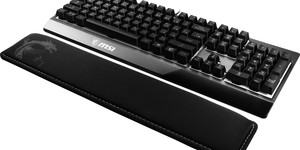
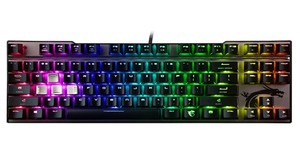




Want to comment? Please log in.